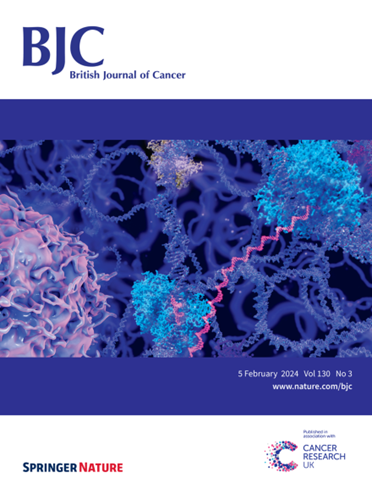CD44+ cells enhance pro-tumor stroma in the spatial landscape of colorectal cancer leading edge
IF 6.4
1区 医学
Q1 ONCOLOGY
引用次数: 0
Abstract
The heterogeneity of tumors significantly impacts on colorectal cancer (CRC) progression. However, the influence of this heterogeneity on the spatial architecture of CRC remains largely unknown. Spatial transcriptomic (ST) analysis of AOM/DSS-induced colorectal cancer (CRC), integrated with single-cell RNA sequencing, generated a comprehensive spatial atlas of CRC. Pseudotime trajectory, stemness evaluation, and cell-cell communication analyses explored how CD44+ tumor cells at the leading edge remodel the tumor microenvironment (TME). In vitro experiments and immunofluorescence staining of clinical samples validated pleiotrophin (PTN) signaling in promoting cancer-associated fibroblasts (CAFs) phenotypic transition and CRC progression. Our findings revealed a distinctive layered ring-like structure within CRC tissues, where CD44+ tumor cells exhibiting high stemness were positioned at the tumor’s leading edge. Inflammatory CAFs (iCAFs)-like, myofibroblastic CAFs (myCAFs)-like cells and pro-tumorigenic neutrophils primarily located at the tumor edge, in proximity to CD44+ tumor cells. CD44+ tumor cells then triggered the phenotypic transition of CAFs into iCAF-like and myCAF-like cells through PTN signaling. Our results provide distinctive insights into how tumor heterogeneity reshapes the TME at the leading edge of tumor, thereby promoting CRC progression.

CD44+细胞在结直肠癌前沿的空间景观中增强了肿瘤前基质。
背景:肿瘤的异质性显著影响结直肠癌(CRC)的进展。然而,这种异质性对结直肠癌空间结构的影响在很大程度上仍然未知。方法:对AOM/ dss诱导的结直肠癌(CRC)进行空间转录组学(ST)分析,结合单细胞RNA测序,生成CRC的综合空间图谱。伪时间轨迹、干细胞性评估和细胞-细胞通讯分析探讨了CD44+肿瘤细胞如何在前沿重塑肿瘤微环境(TME)。体外实验和临床样品的免疫荧光染色证实了多营养因子(PTN)信号传导促进癌症相关成纤维细胞(CAFs)表型转变和CRC进展。结果:我们的研究结果揭示了CRC组织中独特的层状环状结构,其中CD44+肿瘤细胞位于肿瘤边缘,表现出高干性。炎性CAFs (iCAFs)样细胞、肌成纤维细胞CAFs (myCAFs)样细胞和致瘤前中性粒细胞主要位于肿瘤边缘,靠近CD44+肿瘤细胞。然后,CD44+肿瘤细胞通过PTN信号触发caf向icaf样细胞和mycaf样细胞的表型转变。结论:我们的研究结果为肿瘤异质性如何重塑肿瘤前沿的TME,从而促进CRC进展提供了独特的见解。
本文章由计算机程序翻译,如有差异,请以英文原文为准。
求助全文
约1分钟内获得全文
求助全文
来源期刊

British Journal of Cancer
医学-肿瘤学
CiteScore
15.10
自引率
1.10%
发文量
383
审稿时长
6 months
期刊介绍:
The British Journal of Cancer is one of the most-cited general cancer journals, publishing significant advances in translational and clinical cancer research.It also publishes high-quality reviews and thought-provoking comment on all aspects of cancer prevention,diagnosis and treatment.
 求助内容:
求助内容: 应助结果提醒方式:
应助结果提醒方式:


